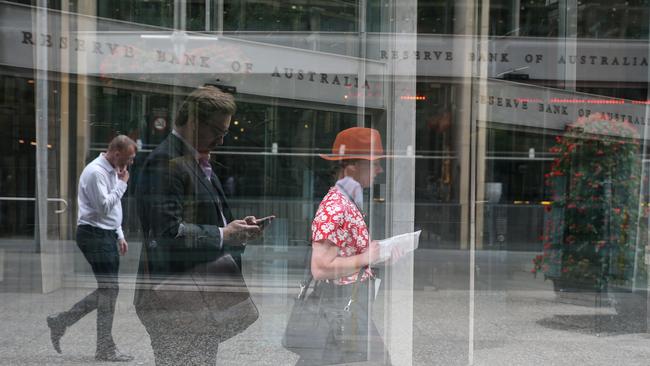Recession now a ‘very good chance’, ex-RBA official says
Hopes that the Reserve Bank can tame inflation without tipping the economy into recession are dwindling with each Reserve Bank rate rise, leading economists say.

The Reserve Bank’s former head of financial stability says this week’s interest rate hike – and the near certainty of more to come – means it’s less a question of if the country will be tipped into recession, but how deep the downturn will be.
Challenger chief economist Jonathan Kearns, who joined the investment firm earlier this year after nearly three decades at the RBA, told The Australian there had been a marked shift in rhetoric from governor Philip Lowe in recent weeks, and that another “couple” of rate rises to 4.6 per cent were now firmly on the cards.
“At 3.85 per cent our cash rate was significantly lower than in New Zealand, the US, UK and Canada, and it’s not clear our economic situation was that different. It feels like they realise they need to have rates higher,” Dr Kearns said.
The comments came after the Bank of Canada on Wednesday night shocked markets with a 0.25-percentage-point hike in its key policy rate to 4.75 per cent, saying the Canadian economy was running too hot to bring inflation back to its 2 per cent target.
Dr Lowe this week said he still believed the bank could tame inflation without sending unemployment sharply higher, although the path would be “difficult” and “bumpy”.
As Anthony Albanese said he remained “very positive about Australia’s future”, Dr Kearns said “it certainly feels like the tide is coming in and that narrow path is getting narrower”.
“There’s a very good chance we do have some degree of recession, and it’s just a matter of how deep that is,” he said.
Dr Kearns said that given the scale of the past year’s monetary policy tightening it was difficult to predict how many households would fall behind on their mortgages, or ultimately be forced to sell their homes.
“I think we don’t think we have a strong guide for that because household debt is much higher than it has been in previous rate cycles,” he said. “Also, this increase in rates is larger and much, much faster. So you’re starting to get some borrowers facing interest rates exceeding what their mortgage was tested on, and that is clearly a challenge.
“We are starting from loan arrears being at very low levels. Yes, there will be significant pick-up, undoubtedly, but we are also coming from a low level.”
KPMG chief economist Brendan Rynne said he expected the economy to grind to a halt in the second half of this year, and that it would not take much to get two consecutive quarters of economic contraction – the technical definition of a recession. “The narrow path is as wide as the Kokoda Trail,” Dr Rynne said, although with real GDP per capita shrinking by 0.2 per cent in the March quarter, “whether or not it’s a technical recession doesn’t matter”. “Our analysis is showing the economy is going to be very weak, and for households out there it’s going to feel like it’s a recession,” he said.
Yarra Capital head of macroeconomics Tim Toohey criticised the RBA’s decision to continue hiking rates despite ample evidence that the surge in borrowing costs was already proving a significant drag on the economy.
He said the central bank’s focus on unit labour costs, which jumped to 7.9 per cent in the year to March, as a justification for the latest hikes was “completely missing the point” and an “overreach” that unnecessarily risked the economy.
“Look at what workers are getting paid per hour: that’s at 2.7 per cent and not accelerating at all,” he said, adding that the bank’s approach should be moving more carefully and spacing out rate rises as needed.








To join the conversation, please log in. Don't have an account? Register
Join the conversation, you are commenting as Logout